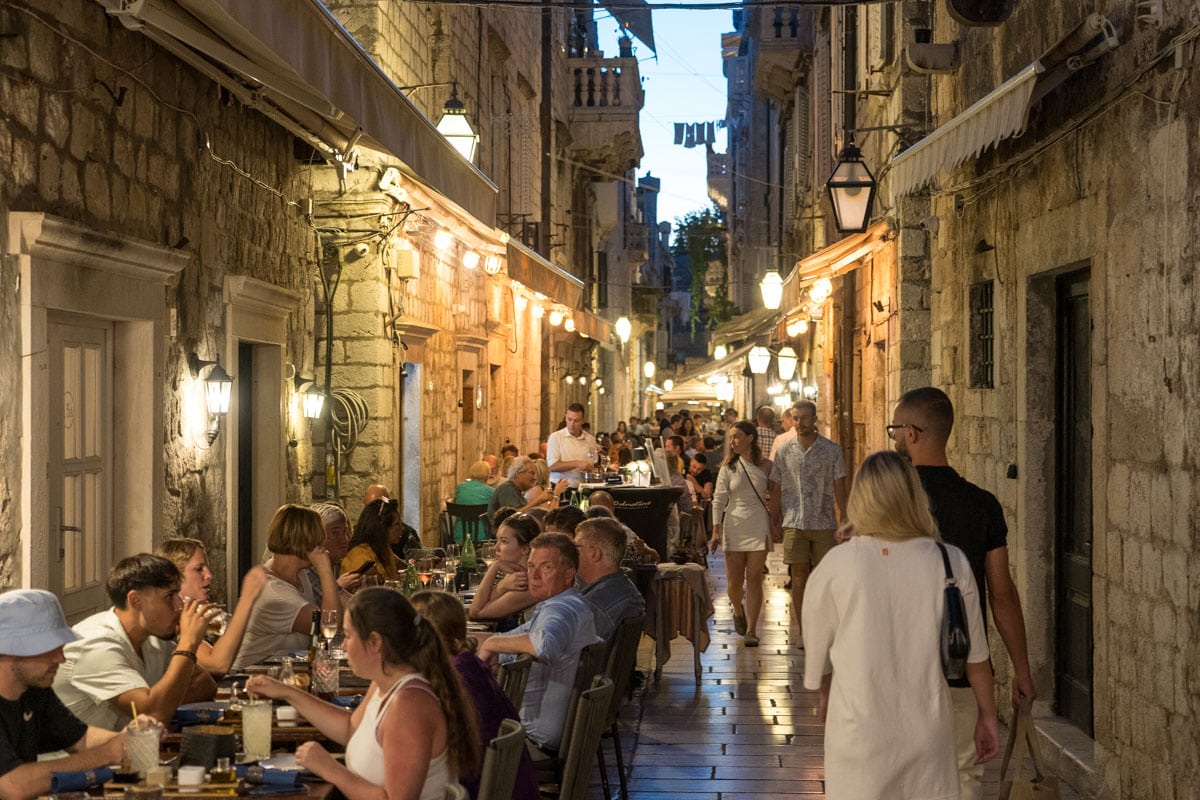
Prijeko Street is a charming, narrow medieval lane that runs through the heart of Old Town Dubrovnik, just north of Stradun, the main street. Known locally as Ulica Prijeko, the street is lined with Baroque-style houses. Today, it’s home to a mix of restaurants, cafés, and boutique accommodations.
Prijeko Street runs parallel to Dubrovnik’s main thoroughfare, Stradun, about 50 meters uphill to the north. It stretches from the east, near the Franciscan Monastery, to the west, near the Dominican Monastery.
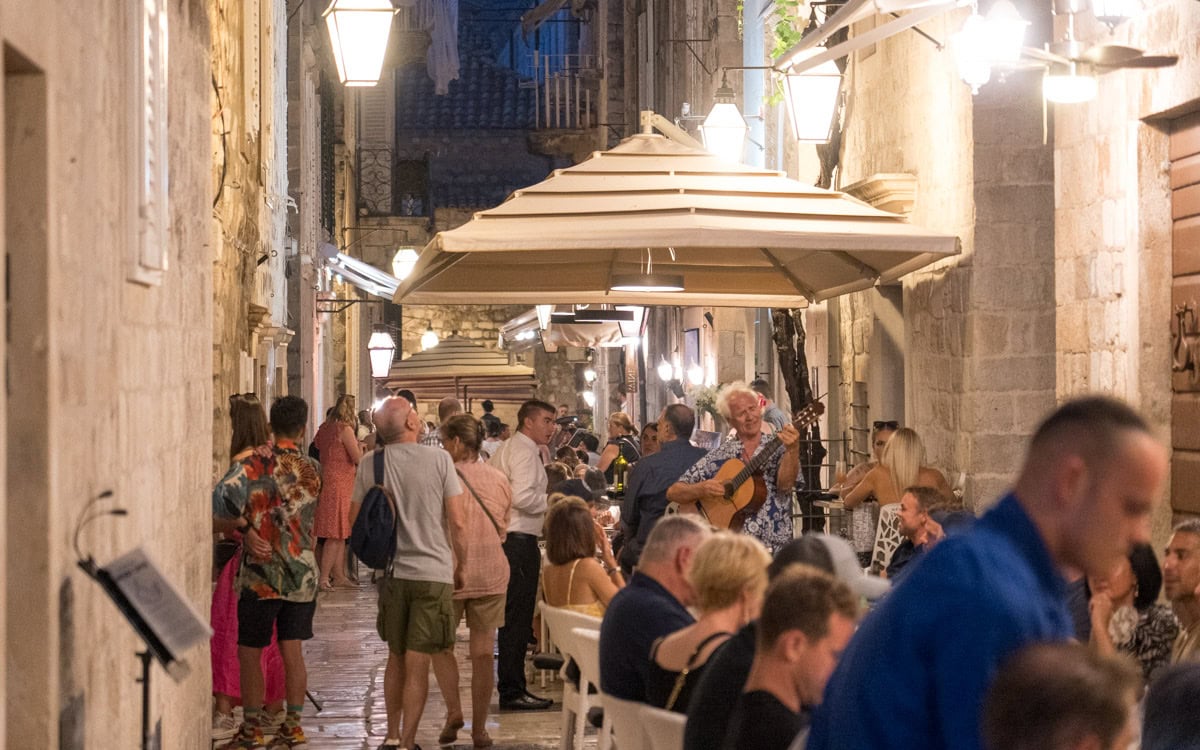
The earliest mention of Prijeko Street dates to the Dubrovnik City Statute of 1272. This legal code defined the city’s street network and layout, specifying the width of each street. The planned street layout ensured that citizens could easily move from residential quarters to commercial areas near the harbour.
As with much of the city, the 1667 Dubrovnik earthquake left Prijeko Street in ruins. Almost all of the houses lining the street today are Baroque in style, though many retain Gothic and Renaissance elements in their portals and balconies.
Prijeko Palace is the only medieval building on Prijeko Street to have partially survived the 1667 earthquake. Its upper floors were rebuilt to their 15th-century appearance during a restoration project carried out between 2012 and 2013. Today, the building operates as a boutique hotel with nine rooms and also houses the Stara Loza rooftop restaurant.
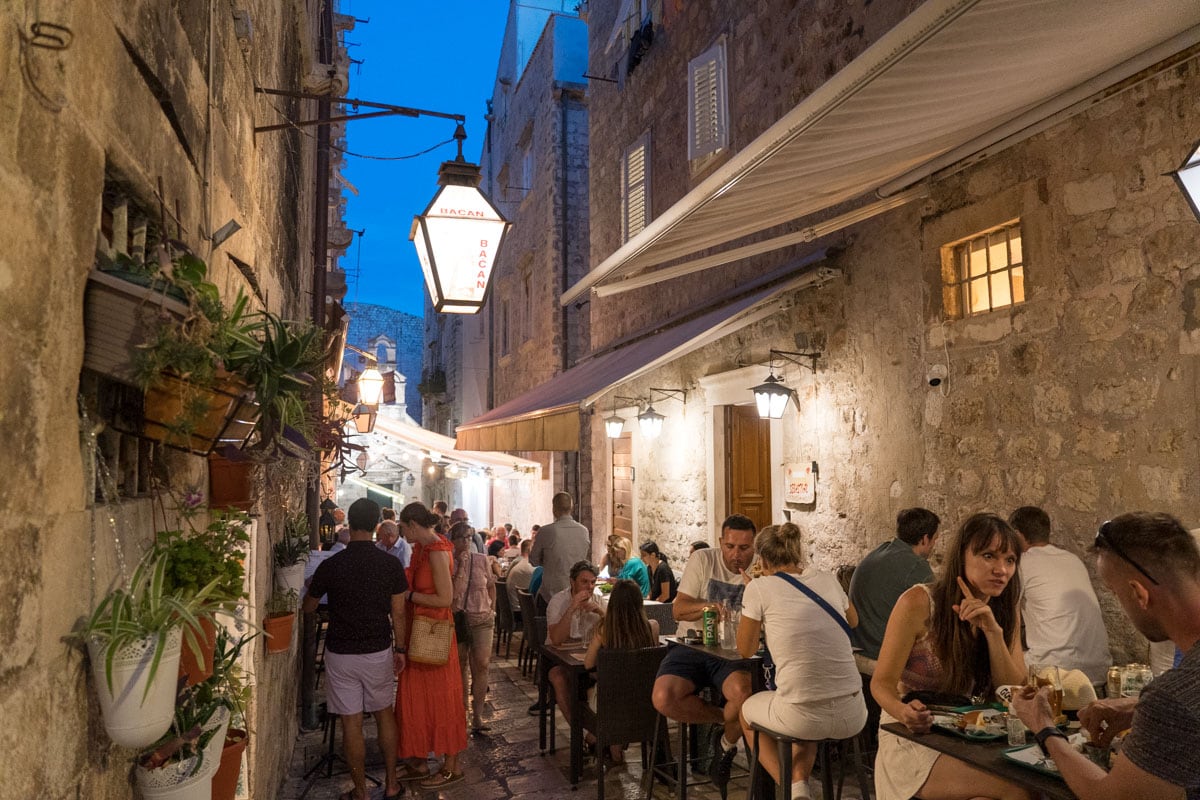
Although in the heart of Dubrovnik, Prijeko Street can feel quiet during the day. But in the evening, everything changes. The narrow street fills with people as restaurants, cafés, and bars come alive, serving local dishes like seafood, beef, and cheese.
Even if you aren’t planning to eat, walking down Prijeko Street is worth it for the classic old-town atmosphere, featuring Gothic and Renaissance details such as wrought-iron lanterns and stone arches. And while it is only steps away from the Stradun, it feels hidden.
Prijeko Street Information
Hours
24 hours
Admission
Free
Address
Prijeko ul., 20000, Dubrovnik, Croatia
GPS Coordinates: 42.64172,18.10951
Map
Nearby Sights
Stradun
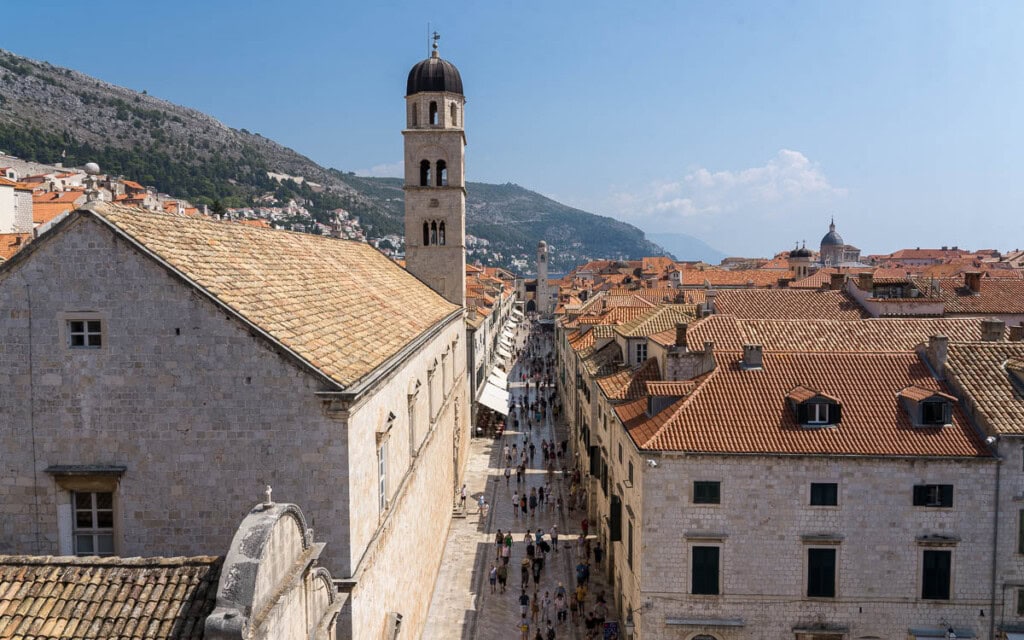
Stradun, officially Placa, is Dubrovnik's main street, stretching 300 meters from Pile Gate in the west to Luža Square in the east. Along the limestone-paved street, which cuts through the heart of Dubrovnik, are many historical sights, restaurants, bars, cafes, and shops. Along Stradun, you will find some of Dubrovnik's most important sites, including the Large Onofrio's Fountain, Sponza Palace, the Church of St.
Luža Square

Luža Square, at the eastern end of Stradun, is one of Dubrovnik's busiest and most historically significant central squares. It has been an important meeting point for centuries and is home to some of the city's most significant landmarks, making it a must-visit spot in the Old Town. Since the Middle Ages, Luža Square has been a central meeting place for citizens of the Republic of Ragusa, present-day Dubrovnik.
Orlando's Column
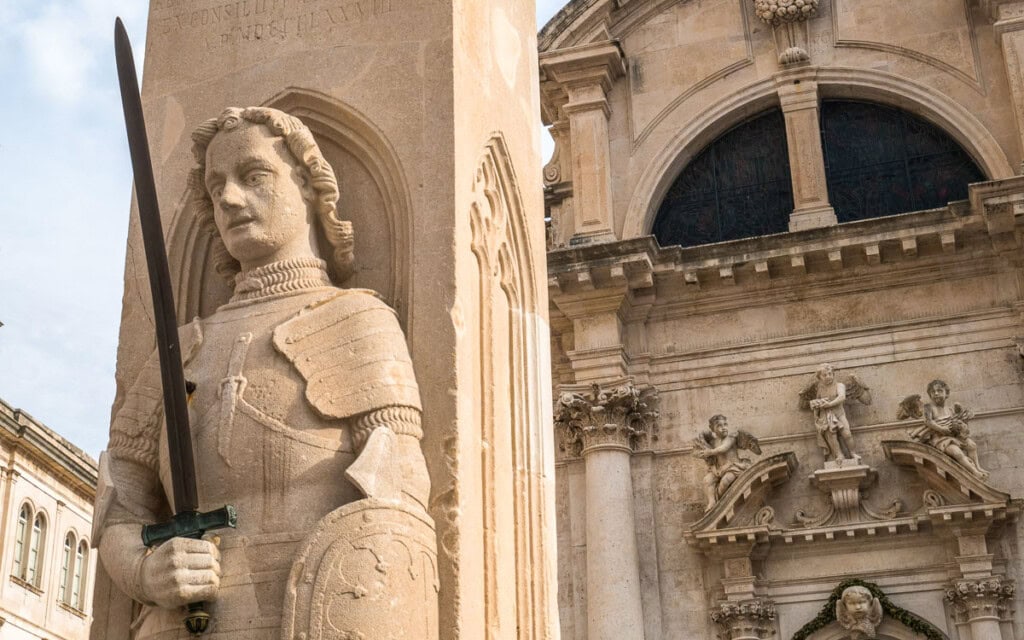
In the center of Luža Square, on the eastern end of Stradun, is Orlando's Column, a historic stone monument dating back to 1418. Carved into the statue is a heroic medieval knight who defended Dubrovnik from invaders. In 1418, Bonino di Jacopo, an Italian master sculptor from Milan, built the column with the help of local sculptor Antun Dubrovčanin.
Church of St. Blaise
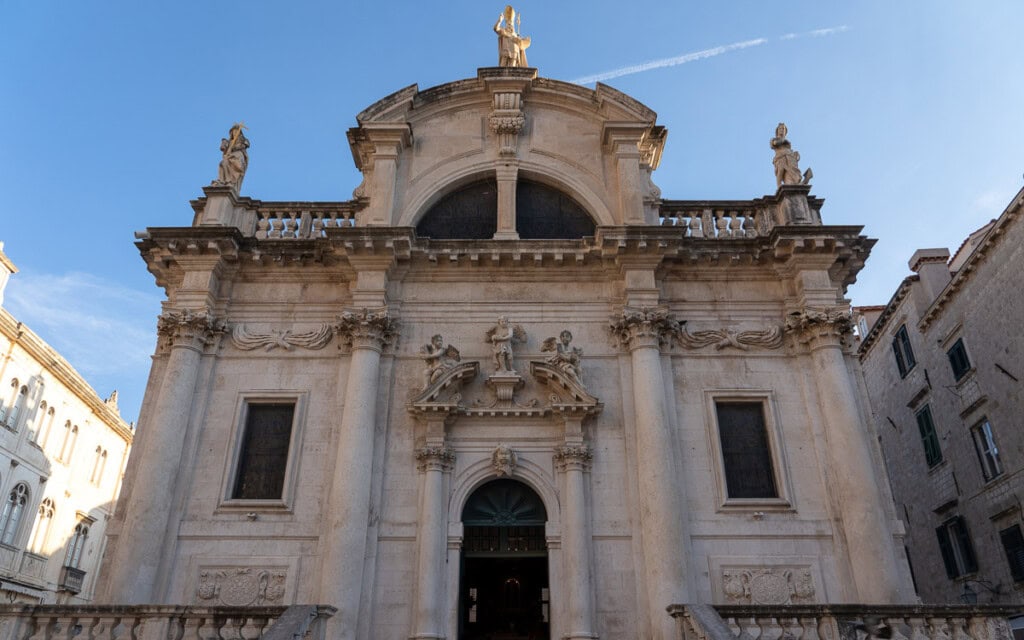
The Church of St. Blaise, located on the eastern end of Stradun, is one of the most iconic and famous landmarks in Dubrovnik, Croatia. The church, dedicated to Saint Blaise, the patron saint of Dubrovnik, dates back to the early 18th century. A Romanesque church stood at this location from the 14th century until the middle of the 17th century.